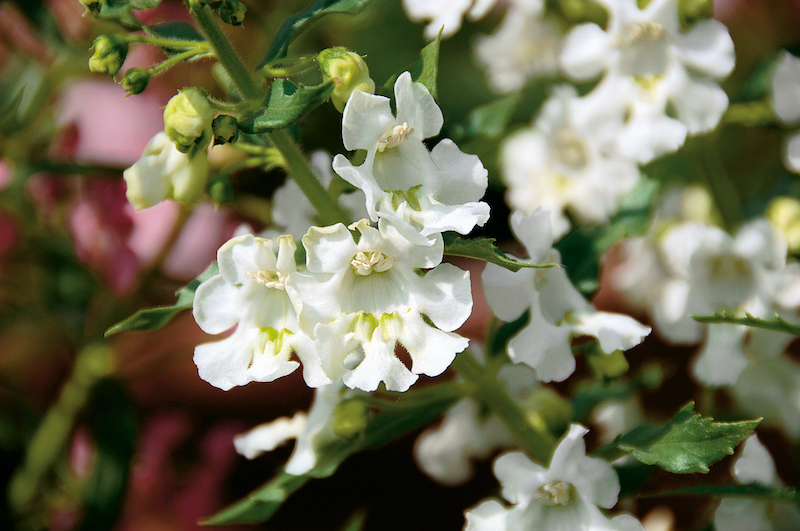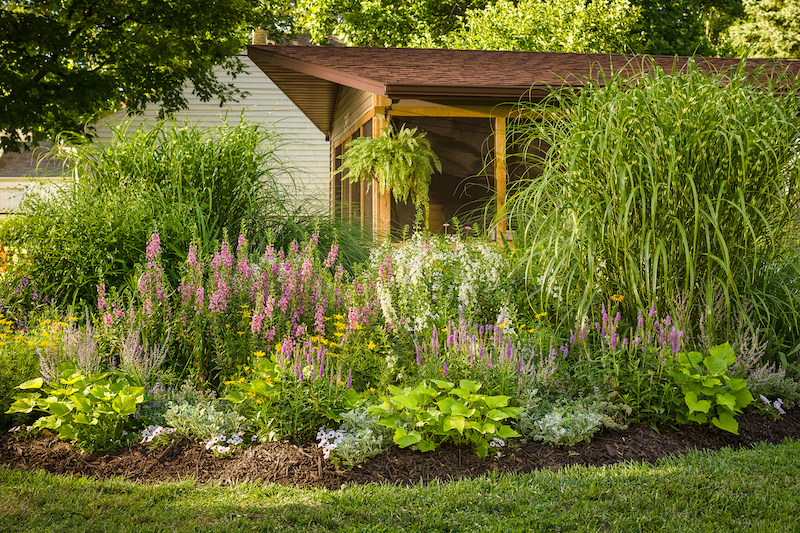Snapdragons (Antirrhinum majus) are well-loved, cool-season flowers that can be either short-lived perennials or annuals. Snapdragons offer a huge range of options to gardeners in color, height, and now even habit! Snapdragons are easy to grow but prefer well-drained, fertile soil in full sun to part shade locations.

What You Need to Plant Snapdragons
- Seedlings
- Trowel
- Compost
- Good Location
- Water Source
Where to Plant Snapdragons
Choose a spot in your garden to plant snapdragons in full sun or part shade. Snapdragons will bloom more prolifically in full sun, but they will likely not last through the heat of the summer in full sun. A location in part shade could prolong the lifespan of your snapdragons. Choose a position based on the height of the variety you have chosen to plant either as a border planting or taller focal point in your garden. Mid-size to dwarf/compact snapdragons make great container plants. Newer cascading snapdragon varieties are also great for containers or hanging baskets. Snapdragons prefer well-drained soil that is fertile with a neutral pH of 6-7. Seedlings can be planted in a hole slightly larger than their root ball and should not be planted too deep.

Snapdragon Spacing
Snapdragons range in flowering height from compact border plants all the way to very tall 3-4’ cut flower varieties. Pay close attention to the variety you are purchasing based on your intended garden planting location and purpose. To get a romantic cottage garden feel, choose mid-size to taller varieties and plant in mass groupings to get beautiful swaths of color by mid summer. Snapdragons do not spread readily and can therefore be planted close together about 6 inches apart. Close plantings can also provide support for neighboring plants as they grow. Additional trellises and supports should be utilized for taller cutting varieties.
Steps to Planting Snapdragons
Step 1 - Allow your snapdragon seedling transplants to harden off for a few days to a week prior to planting; expose the plants to wind and sun gradually if they’ve come from a sheltered indoor location (disregard if purchased from an outdoor nursery)
Step 2 - Choose a good location for your snapdragon plant
Step 3 - Dig a hole slightly deeper and wider than the size of your snapdragon root ball
Step 4 - Add a sprinkle of compost to the base of the hole to feed and fertilize your snapdragon as it grows
Step 5 - Gently place the seedling root ball in the hole and back fill with garden soil or potting mix
Step 6 - Water thoroughly after planting and check plants regularly until established
When to Plant Snapdragons
Snapdragons are cool-season lovers and do best when planted in early spring or autumn. Plants can handle light frosts but not hard frosts. The ideal time to plant snapdragons would be in early spring right after the last frost. Transplant snapdragons in the morning or evening, not in the middle of the day during the most intense sun hours. If planting before the last frost date, take precaution to cover your transplant during a hard frost.
Transplanting Snapdragons
Snapdragons are typically grown as annuals and will not need to be transplanted, repotted or divided due to their size. Snapdragons can be moved if special care and attention is taken to avoid transplant shock by avoiding peak sunlight hours and watering thoroughly before and after transplanting. If allowed to go to seed, certain snapdragon varieties can self seed in the garden but do not do so aggressively, so you will not need to worry about the plants spreading or taking over where planted.
 |
Author Katie Endicott - Published 7-05-2022 |
